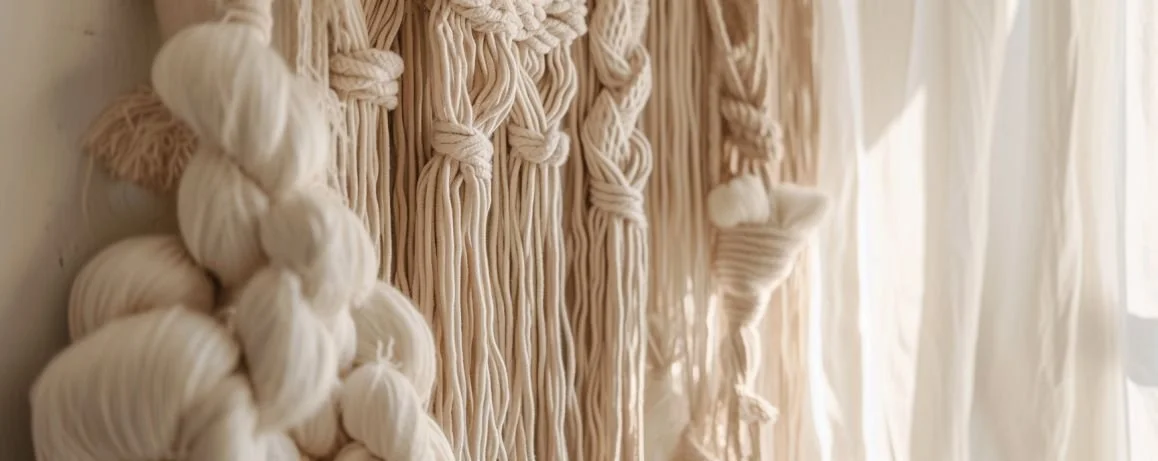Macramé
Overview
Macramé is the art of knotting cords or strings into patterns to create decorative and functional items. This craft involves various knotting techniques, such as square knots and half hitches, to create intricate designs and textures. Macramé is most commonly used to make wall hangings, plant hangers, jewelry, and home decor items. Its versatility and the minimal requirement of tools make it accessible and popular among crafters. Macramé offers a relaxing and creative outlet, allowing for the creation of unique and personalized pieces with a bohemian or rustic aesthetic.
Techniques
Square Knot: This is the fundamental knot in macrame, made by crossing two cords over two filler cords and then reversing the process.
Larks Head Knot: Also known as a cow hitch knot, this technique is often used to attach the cord to the dowel or ring at the beginning of a macrame project.
Double Half Hitch Knot: This knot is useful for making curves and diagonal lines within your macrame art.
Josephine Knot: This intricate looking knot is perfect for adding decorative details in your macrame designs.
Alternating Square Knots: This is a method of creating a net-like structure by alternating the cords used to make the square knots.
Crown Knot: This ornamental knot involves looping multiple cords around a central point, resulting in a crown-like appearance.
Spiral Knot: A variation of the half-knot, this technique creates a spiraling effect which is great for creating twisted cords or sennits.
Loop Knot: This knot creates a loop at the end of a cord and can be used to create fringes or a secured edge in your design.
Clover hitch knot: Used for transitioning in patterns and changing colors in your project, this knot helps to create a structured and secured piece.

